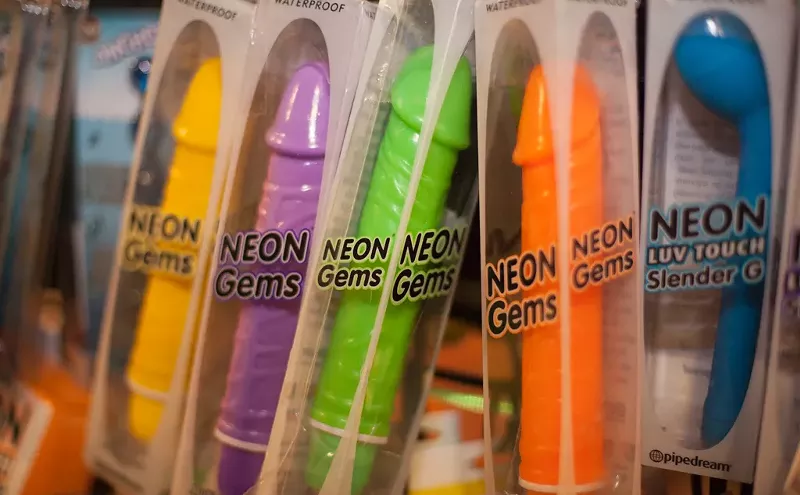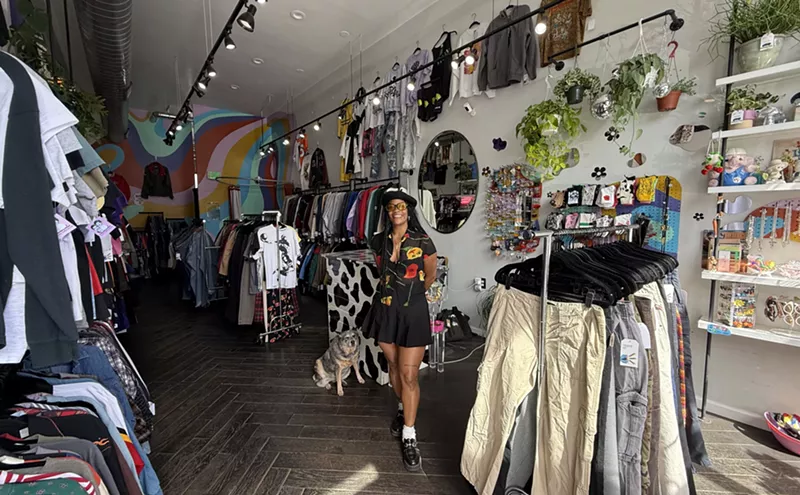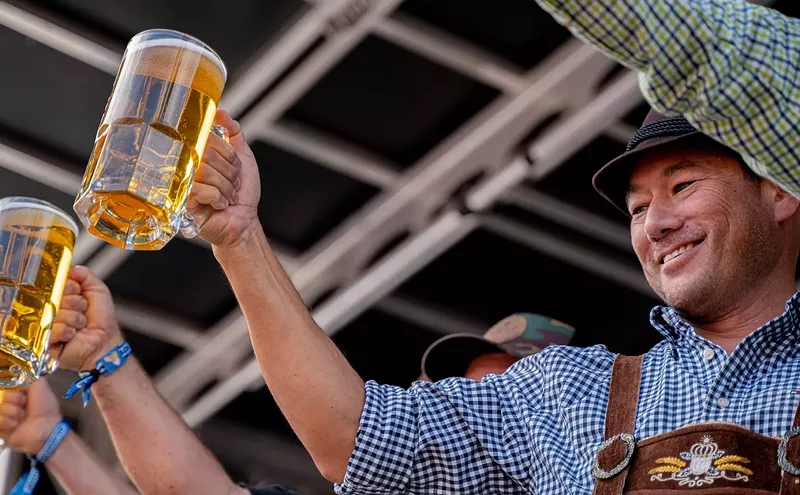Otsuka, whose grandparents came to California from Japan, grew up around Los Angeles, and outside of his Japanese ancestry, he had no special interest in Asian art. But then he spent his junior year of college in Japan, where he learned about the art not just of that country, but of China, Korea and Taiwan, as well.
See also: Shape & Spirit: Selections From the Lutz Bamboo Collection at the DAM
When he returned to complete his Bachelor of Arts degree at the University of California, Santa Barbara, Otsuka changed his course of study and began to take classes in Asian art history. He later earned a Master of Arts from the Institute of Fine Art at New York University, where he was a student of legendary Asian-art scholar Alexander Soper, an experience that would pay off in spades for Otsuka.During Christmas break in 1972, Otsuka visited his sister in Boulder and met several members of the art-history faculty at the University of Colorado -- in particular, Ronald Bernier, a specialist in the art of India. A few months later, at meetings of the College Art Association in New York, Otsuka ran into Bernier, who told him that there was an opening for an Asian specialist at the DAM; then-curator Robert Moes was leaving to take on a similar post at the Brooklyn Museum. So Otsuka sent in what he describes as a "very thin" résumé and a "sorry" cover letter, but was nonetheless asked to interview for the job with director Otto Bach, who ran the museum from 1944 to 1974.
During this trip, Otsuka took a bus to Colorado Springs to meet with Emma Bunker, a powerhouse donor and scholar in the Asian field. Like Otsuka, Bunker had been a student of Soper's at NYU, and doubtless the old man had given his blessing to the idea of hiring the up-and-coming curator. Otsuka later found out that he was the only one asked to interview for the DAM job.
Otsuka notes that Bunker changed his life. (As a personal aside, she changed mine, too, and I think it's safe to say that I wouldn't be writing about art today if I hadn't been inspired by her phenomenological understanding of the basic nature of art.)
"The Asian-art collection was well formed and covered the major areas of Asian art when I joined the museum on October 1, 1973," says Otsuka. "The department goes back to 1915, when Walter Meade pledged to donate Chinese and Japanese works of art, so the department is approaching its hundredth anniversary next year."
One thing that was a disappointment for Otsuka when he arrived was the state of the exhibition space, and one of the first things he wanted to do was to reinstall the department, on what was then the fifth floor of the Ponti. But it would be twenty years before he was able to do that, and even then, a major problem arose that he needed to quickly fix.Asian Art was to be moved to the fourth floor, and it turns out that four is an unlucky number in many Asian cultures, like thirteen is here. Otsuka went to then-director Lewis Sharp and told him of his concerns. "Lewis responded, 'Yes, yes,' but it was apparent that he wasn't going to do anything about it," Otsuka recalls. Then Celeste Fleming, a noted supporter of the department, went to Sharp and told him that Otsuka was right, and that if the Asian department was on the fourth floor, the DAM would be jeopardizing its relationships with collectors and museums in Asia. "With Celeste's confirmation, Lewis agreed to renumber the floors, changing the mezzanine to the second floor," says Otsuka, which meant that even though the Asian department was moving down a level, it would still be called the fifth floor.
When he first arrived, Otsuka surveyed the existing collections and perceived its strengths (traditional Japanese, Chinese and Indian art) and its weaknesses (Korean, Southeast Asian, Southwest Asian and the art of the Himalayan countries). Relying almost exclusively on gifts rather than acquisitions, he bolstered the strong areas over the years while building up the weaker parts. "Little by little," he says, "we brought the general level of the collection up."
An interesting period in the department's history had to do with the transfer of Hong Kong from Britain to China in 1997. Ten years before, in 1987, Otsuka had begun to develop relationships with Hong Kong collectors who were rightly concerned about whether or not they would be allowed to keep their treasures. So Otsuka convinced a number of them to loan works to the DAM for safekeeping. With the more or less seamless transition for Hong Kong, many of those works were returned to their owners, but several of the collectors, grateful to Otsuka for giving them peace of mind, subsequently made generous gifts to the department.
Among the most unusual categories that Otsuka has developed is a collection of art made from bamboo, which was a gift from the Lutz family. "We are one of the only museums in the world to have a gallery devoted to bamboo," he points out.
Also unusual is Otsuka's special interest in twentieth-century exemplars of centuries-old techniques. One of these traditions, woodblock printing, is the subject of his final show for the DAM. The exhibit, At the Mirror: Reflections of Japan in 20th Century Prints, has been tightly installed in the cozy Martin and McCormack Gallery on level two in the Hamilton Building. Nearly all of the prints on view were acquired during Otsuka's tenure.
The space has been organized in the manner of a maze, with prints arranged thematically rather than chronologically. The exhibit includes seventy prints done between 1901 and 2001, with all of the important printmakers from that time being represented. One of the interesting aspects of this show is the way it turns the history of Western modernism on its head. As is well known, European and American modernism owe a huge debt to Asian art, more specifically to Japanese prints, which first came to Europe and the U.S. in the nineteenth century. So in the evocatively titled At the Mirror, Otsuka is presenting the opposing narrative: how the modern art of the West affected Asian art of the same period.
A subtle undercurrent in the show is the way that Otsuka uses the prints not just to demonstrate the stylistic advancements and developments of the time, but also as visual aids to show the enormous changes Japan underwent during this time, going from a pre-industrial society to a post-industrial one. The delicate paper teahouses of the earlier prints are replaced by skyscrapers in the newer ones. There were major changes in technique as well during this time, and the finely carved blocks that made the earliest prints show off a kind of Japanese craft expertise that has been lost to modernization, with the new prints based on less finely carved blocks.
Otsuka told me that he plans to stay involved in the community where he's lived his entire adult life. "This spring, DU has asked me to teach a class, and I'll be doing a lecture at the Botanic Gardens. I'll still be around doing things," he says. Fans of Asian art will definitely be glad to hear that.
At the Mirror, through September 21, at the Denver Art Museum, 100 West 14th Avenue Parkway, 720-865-5000, denverartmuseum.org.
Turn the page to see more photos from the collection:










